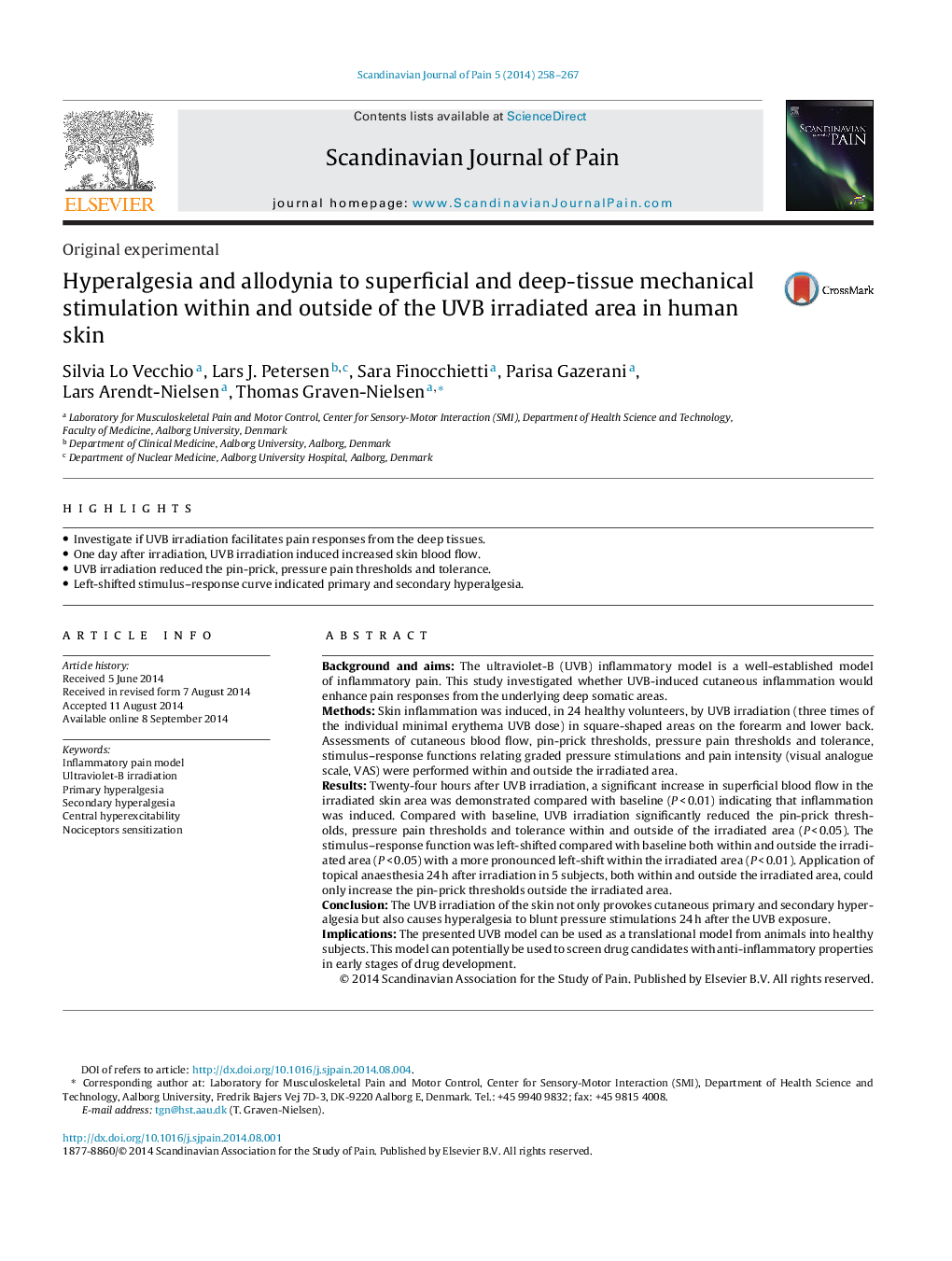| Article ID | Journal | Published Year | Pages | File Type |
|---|---|---|---|---|
| 2770682 | Scandinavian Journal of Pain | 2014 | 10 Pages |
•Investigate if UVB irradiation facilitates pain responses from the deep tissues.•One day after irradiation, UVB irradiation induced increased skin blood flow.•UVB irradiation reduced the pin-prick, pressure pain thresholds and tolerance.•Left-shifted stimulus–response curve indicated primary and secondary hyperalgesia.
Background and aimsThe ultraviolet-B (UVB) inflammatory model is a well-established model of inflammatory pain. This study investigated whether UVB-induced cutaneous inflammation would enhance pain responses from the underlying deep somatic areas.MethodsSkin inflammation was induced, in 24 healthy volunteers, by UVB irradiation (three times of the individual minimal erythema UVB dose) in square-shaped areas on the forearm and lower back. Assessments of cutaneous blood flow, pin-prick thresholds, pressure pain thresholds and tolerance, stimulus–response functions relating graded pressure stimulations and pain intensity (visual analogue scale, VAS) were performed within and outside the irradiated area.ResultsTwenty-four hours after UVB irradiation, a significant increase in superficial blood flow in the irradiated skin area was demonstrated compared with baseline (P < 0.01) indicating that inflammation was induced. Compared with baseline, UVB irradiation significantly reduced the pin-prick thresholds, pressure pain thresholds and tolerance within and outside of the irradiated area (P < 0.05). The stimulus–response function was left-shifted compared with baseline both within and outside the irradiated area (P < 0.05) with a more pronounced left-shift within the irradiated area (P < 0.01). Application of topical anaesthesia 24 h after irradiation in 5 subjects, both within and outside the irradiated area, could only increase the pin-prick thresholds outside the irradiated area.ConclusionThe UVB irradiation of the skin not only provokes cutaneous primary and secondary hyperalgesia but also causes hyperalgesia to blunt pressure stimulations 24 h after the UVB exposure.ImplicationsThe presented UVB model can be used as a translational model from animals into healthy subjects. This model can potentially be used to screen drug candidates with anti-inflammatory properties in early stages of drug development.
